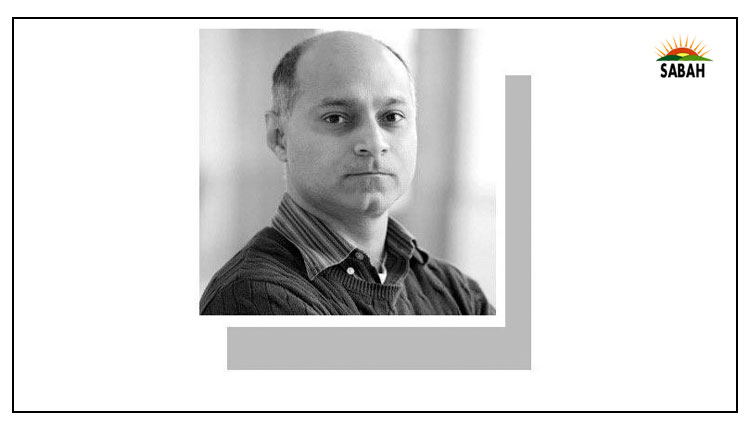Where it all began…Khurram Husain
NEARLY a quarter century ago, Pakistan stood at a juncture from which, it seems, the country has not emerged. The years in between now seem, in hindsight, little more than a brief detour that has brought us back to the same place.
In the year 2000, when the regime of Gen Musharraf began its term, Pakistans relationship with its creditors was in tatters. The economy was on its knees, foreign exchange reserves depleted to the point where foreign currency accounts were frozen and import restrictions tightened to levels not seen since the 1960s, strong fears of default plagued the economy and multiple exchange rates were in effect.
All creditors at the time multilateral as well as private had been severely alienated. An IMF programme signed in 1997 had hit the rocks following the nuclear detonations and the imposition of sanctions.
Review after review failed from May 1998 onwards, until a year later the programme was declared off track and terminated. The price of Pakistani bonds crashed to near-default levels, its credit rating downgraded to deep junk territory.
Foreign investors were spooked after the Nawaz Sharif government attacked Hubco the single largest private foreign investor to acquire stakes in the country until that point in time and seized their headquarters and froze their accounts, alleging corruption in the grant of tariff.
When Gen Musharraf seized power in late 1999, this mess became his to manage. His regime slowly rebuilt the relationship with private creditors and investors by negotiating multiple rounds of debt restructuring with private bondholders, negotiating a settlement with Hubco, and getting the country back onto a short-term nine-month Stand-by Arrangement (SBA) with the IMF that involved fulfilling some of the most difficult policy conditions any Fund programme had asked the country to meet until that point.
Once again the economy is moribund, and the country faces a reform or perish moment.
The whole process took two years to complete. The first debt restructuring happened early in 2000. The IMF programme began in November 2000 and ran till September 2001. A settlement with Hubco was reached in December 2000. By the summer of 2001, as the SBA approached completion having minimally stabilised the countrys fiscal equation and external sector, talks were opened for a three-year successor programme on the back of a successful track record established by the SBA. That successor programme came in December 2001.
But something else happened along the way. The Musharraf regime was busy not only stabilising the economy, and continuously delaying the elections that he had promised to hold upon his seizure of power. He was also busy building an alternative political party, which he came to call the PML-Q, and it was built with the help of those politicians who were willing to play ball with his ambitions in return for a seat at the table of power after the elections.
Those elections were only called once both these efforts were successfully completed the economy stabilised and the kings party was ready with the right number of candidates to have a credible shot at winning a majority.
Pakistan had reached a cul-de-sac in those years. There was a reform or perish moment, with goodwill in the international community depleted, forex reserves at bare minimum levels sufficient for just over one months import cover, and growth having hit below two per cent.
There was going to be little choice but to continue down a hard road even after the elections. What changed everything was 9/11, and the sudden reversal of the countrys fortunes from being a near-pariah state to becoming a major non-Nato ally of the US.
The resultant inflows of concessional resources, and the generous debt rescheduling by the Paris Club in 2001, suddenly gave the regime a boost it could not have dreamed of otherwise.
As a result, the Musharraf regime ended up remaining in power till 2008, when he had earlier promised to step down from the position of army chief in 2004, barely a couple of years after the elections.
So long as American troops remained in Afghanistan after 9/11, Pakistan had some sort of standing in the international community. No matter how fraught things became between Pakistan and the US, such as in the years when the Salala and Abbottabad raids happened, they would always return to working together.
It is worth recalling this history today because we have come full circle, and much of what the country is facing today bears a striking resemblance to those days. Since August 2021, with the withdrawal of American troops from Afghanistan, that critical relationship that began after 9/11 has gone.
Once again, the countrys relationship with its creditors is in tatters. Once again, an IMF programme has failed review after review (it is worth recalling that the programme in 1999 also fell apart under the stewardship of Ishaq Dar).
Once again a tough short-term SBA has been agreed to in an effort to rebuild the relationship with the Fund. And until this arrangement was signed, once again the country saw a frenzied conversation around the prospects of default.
Once again, a successor programme will need to be signed as soon as the SBA ends, and if it does not end well, once again the country will have to undertake multiple rounds of debt restructuring in order to stabilise its external sector. Once again the economy is moribund, and the country faces a reform or perish moment.
What is critically important at this juncture is that the other side of what was done under Gen Musharraf not be repeated. If we are back to the year 2000, then stabilising the economy is only one of the priorities.
Building a kings party before calling elections will be the other. If such an effort is also launched, elections could potentially be postponed for another two years. And then we will truly, in earnest, be back to where it all began. Minus, of course, the 9/11 bonanza.
Courtesy Dawn












